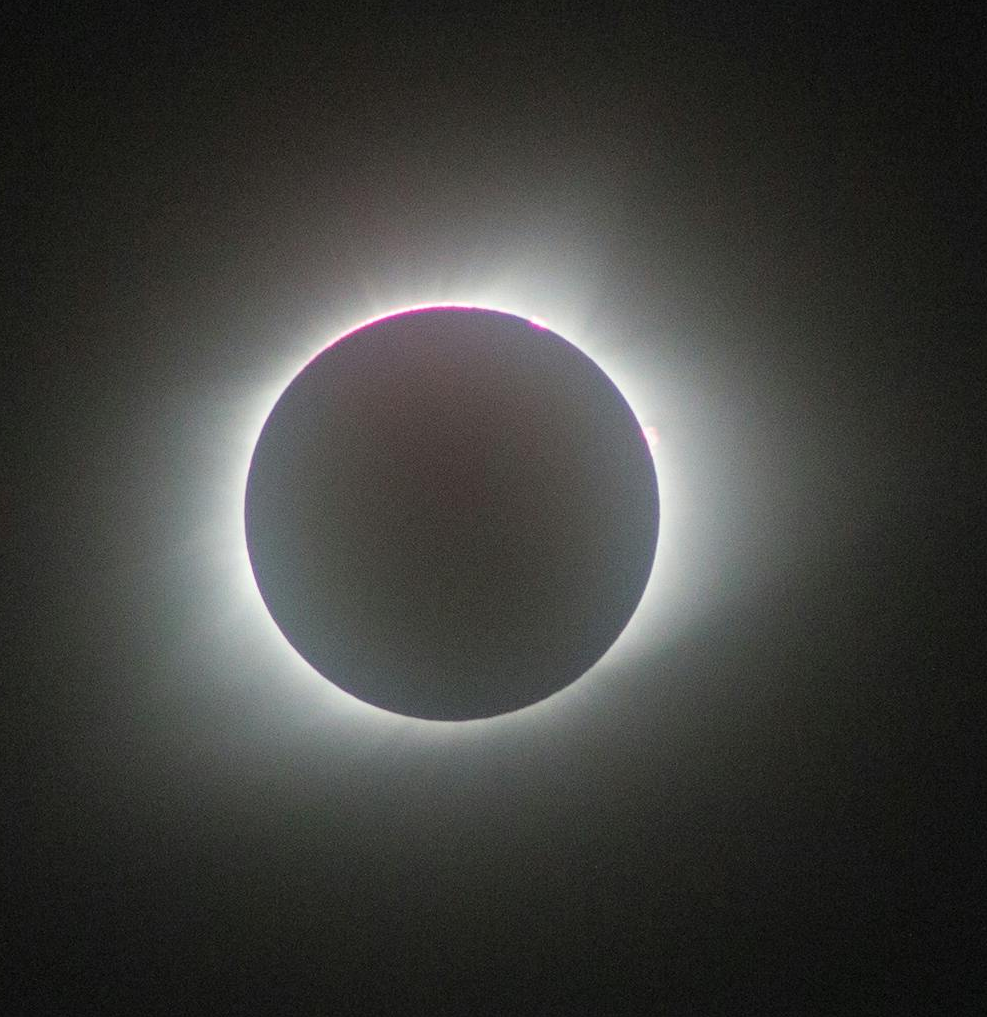President's Column - June 2024
A solar eclipse occurs when the Moon passes between Earth and the Sun, thereby blocking the Sun. A total solar eclipse occurs when the Moon’s apparent diameter is larger than the Sun’s, blocking all direct sunlight.
Total solar eclipses are rare, taking place somewhere in the world every 18 months or so. Ones that are visible from the United States are even rarer as often they are only visible from Earth’s poles or from the middle of the ocean.
Recently, if you live in the US, it’s likely that you experienced at least a partial solar eclipse. If you were lucky, you either lived or were able to travel to a place that fell within the path of totality. The total phase of the eclipse, where the Moon completely covers the Sun, is visible from along a narrow path of totality.
On April 8, 2024, a total solar eclipse crossed over North America, passing over Mexico, the United States and Canada; 15 states were within the path of totality with 48 states seeing at least a partial eclipse.
I kept hearing about it on the news as the event grew nearer and nearer. It was all over the place. Another one had occurred in the US back in 2017. I was fortunate, as I was living in in Atlanta, GA, USA at that time. Having experienced an eclipse then and then hearing another was happening again, I didn’t realize how rare and unique these events truly are… The next one that is viewable from the US won’t happen again until 2044 and won’t be nearly as accessible; the path of totality will only touch three states.
experienced an eclipse then and then hearing another was happening again, I didn’t realize how rare and unique these events truly are… The next one that is viewable from the US won’t happen again until 2044 and won’t be nearly as accessible; the path of totality will only touch three states.
The reporting on the eclipse itself was all very interesting to hear and learn about. This particular one was reported to be quite exciting for the scientific community. The Moon was closer to the Earth, thereby leading to a wider path. This allows for better observations and data collection. During a total solar eclipse is the only time scientists can really study the Sun’s outer atmosphere (the corona), during totality, and the broader path allows for better observations and data collection.
Another aspect of this all that really grabbed my attention was the discussion of how much the news reporters were stating as estimates on the economic impact. With the timing of the event coming during springtime and the high number of states falling in the path of totality, reports predicted a combined $1.5 billion USD injected into their states’ economies. Approximately one to four million people were projected, making it a significant tourism opportunity. Overall, they stated the eclipse could bring a financial boost of as much as $6 billion USD across the US, largely thanks to the increased spending on hotels, restaurants and travel. What?! Take that, Taylor Swift! WOW!
Places like Southern Illinois University in Carbondale, IL, USA really cashed in on the event. Falling into the “crossed paths region” (where the paths of totality from the 2017 eclipse and 2024 eclipses intersected), they took the opportunity to partner with NASA and host a variety of events and activities for the week of the eclipse. The main event was Eclipse Day at Saluki Stadium. This included a guided eclipse experience featuring stadium-scale live entertainment and activities as well as dedicated solar telescope feeds from across North America on the massive stadium score board and screens…. And of course, then there was the merch!! From sunglasses to baseball caps to posters, there was no shortage of merchandising opportunities.
Whether you went somewhere special or took part in any events, I hope you took a moment to pause and had a chance to experience the event. Few things in life can unify and bring so many people together.

Jennifer Thoroe is Director of Customer Service & Business Development for National Steel Rule, a steel rule manufacturer based in Linden, NJ, USA. She joined forces with National on November 1, 2018 after working in the industry and volunteering with the IADD for over 15 years. She moved up to NJ from GA in the summer of 2019. One pandemic and three moves later, Jennifer is finally settling into her home near the Jersey Shores with her awesome super-fantastic brother Tom and his even cooler dog, Kelowna.
She has consistently used her time and talents to bring greater value to IADD members, whether through chapter activities, managing volunteers, Board service or overseeing myriad membership recruitment and retention activities. For this, Jennifer received the 2017 IADD Cutting Edge Award, one of the Association’s highest honors. She is the first woman to serve as IADD president.
The President's Column appears in The Cutting Edge, the IADD's monthly magazine.


